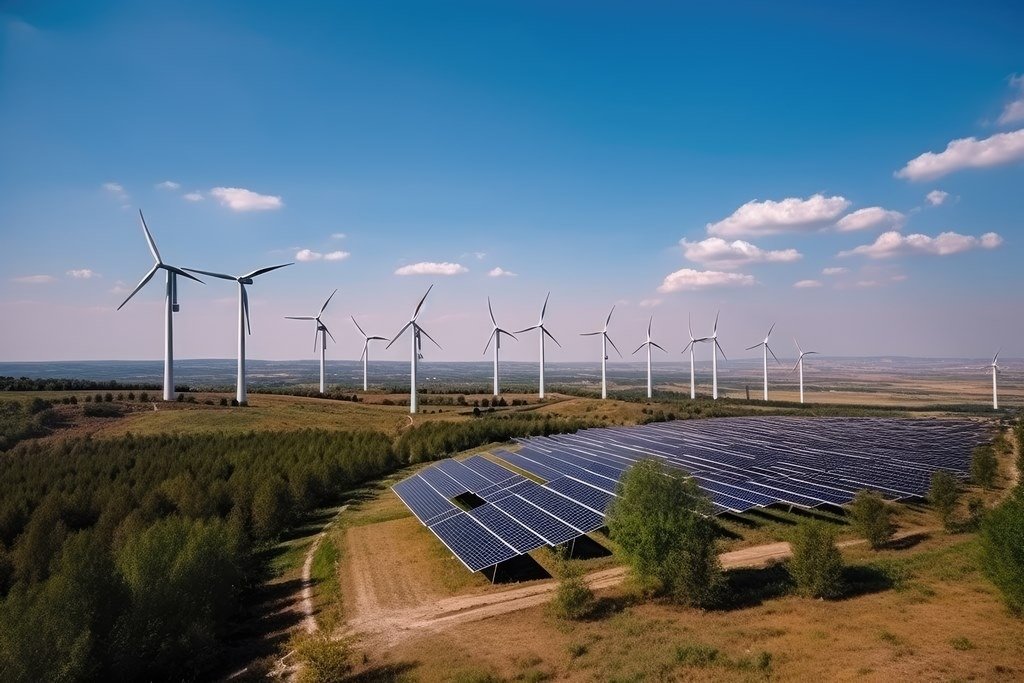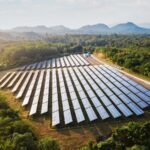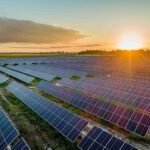How EPCF Reduces Risk and Accelerates ROI in Energy Projects
In today’s rapidly evolving energy landscape, speed and certainty are everything. Whether you’re a government agency, a private investor, or a renewable energy developer, the ability to launch and complete energy projects efficiently can mean the difference between profit and loss. This is where the EPCF model—Engineering, Procurement, Construction, and Financing—has become a game-changer.
At Steelbridge Export, we’ve seen the EPCF model transform risky, slow-moving solar and renewable energy developments into successful, ROI-positive ventures—especially in emerging markets. This article dives deep into how EPCF reduces project risk, accelerates return on investment (ROI), and empowers the future of clean energy.
What is the EPCF Model?
Before we get into its benefits, let’s break down what EPCF actually means.
Engineering
This is the design and planning phase. It includes technical drawings, layout planning, structural designs, and systems integration. In solar projects, it ensures every component—from the tilt of the solar panels to the grid interconnection—is optimized for maximum efficiency.
Procurement
Procurement involves sourcing all materials, equipment, and technology. EPCF contractors typically have strong supplier relationships, allowing them to acquire high-efficiency solar panels, inverters, batteries, and transformers at better prices and quality.
Construction
Here’s where the physical installation happens—site prep, system assembly, electrical wiring, safety inspections, and grid tie-in. A single team handles it all, reducing miscommunications or handoff delays.
Financing
Unlike the more traditional EPC model, the EPCF approach includes project financing—often from global financial institutions or export credit agencies (ECAs). This bundled financing eliminates the need for clients to secure capital separately, which is especially beneficial in developing regions.

Why Traditional Project Models Fall Short
In traditional energy projects, the developer must coordinate with multiple vendors, contractors, and lenders—each with their own timelines, requirements, and risks. This fragmented approach increases:
Delays
Budget overruns
Legal disputes
Risk of project failure
It also slows time-to-revenue, stretching out the period before ROI is realized.
By contrast, EPCF provides a single point of accountability—making projects faster, smoother, and less risky.
How EPCF Reduces Risk in Energy Projects
1. Integrated Project Responsibility
With EPCF, one provider is responsible for every step—from engineering and procurement to construction and financing. This integrated accountability minimizes finger-pointing and keeps the entire project aligned.
If delays or problems arise, the EPCF contractor owns the solution. For clients, that means less stress, fewer legal disputes, and stronger project oversight.
2. Risk-Aware Financing
One of the biggest risks in emerging market energy projects is securing financing. Banks often hesitate to lend due to political, currency, or infrastructure risks. EPCF contractors solve this by bringing in trusted financial institutions—often backed by development banks or government guarantees.
This ensures the project has secured funding from day one, reducing the chances of funding collapse mid-project.
3. Quality and Compliance Assurance
Since EPCF firms handle both procurement and construction, they’re incentivized to source high-quality, compliant materials that won’t cause issues down the line.
This reduces operational risks like:
Electrical failures
Component degradation
Safety violations
In the long run, better quality reduces maintenance costs and system downtime, improving the project’s financial performance.
4. Fast-Track Timelines Reduce Market Exposure
Delays in energy projects mean more money spent on interest payments, labor, and opportunity costs. EPCF projects typically move faster thanks to streamlined approvals and pre-negotiated financing terms.
This fast-tracking reduces the project’s exposure to changing market conditions, such as fluctuating interest rates, commodity prices, or political shifts.
related articles: Smart Financing for Renewable Energy Projects in Developing Economies
How EPCF Accelerates Return on Investment (ROI)
Now, let’s look at the other side of the coin—how EPCF helps energy developers earn profits sooner.
1. Shorter Time to Operation
Every day a solar plant isn’t operational is a day without revenue. With EPCF, timelines are tighter and more predictable. Some projects have been brought online in 30–40% less time than traditional models.
This means:
Earlier power sales
Quicker debt repayment
Faster positive cash flow
2. Optimized CapEx and OpEx
EPCF contractors often get bulk pricing on solar panels and equipment. Their expertise allows them to avoid overengineering and reduce unnecessary CapEx (capital expenditures).
Moreover, better equipment and construction quality mean fewer breakdowns—so your OpEx (operational expenditures) stays low over time.
Combined, these factors dramatically improve ROI over the 20–25 year life of a solar project.
3. Performance Guarantees
Top EPCF firms often include performance guarantees in their contracts. These clauses ensure that your energy system will generate a minimum amount of power annually—or the contractor compensates you.
This protects revenue projections and gives investors confidence in long-term returns.
4. Lower Cost of Capital
Because EPCF models attract institutional and government-backed financing, they often secure lower interest rates than developers could get independently. This lowers the overall project cost and improves ROI.

EPCF in Action: Real-World Success Stories
Latin America: Utility-Scale Solar Farm
A 200 MW solar farm in Latin America faced delays due to land rights and local permits. An EPCF partner stepped in, restructured the financing with a multilateral development bank, and completed the project six months early. Today, the project generates stable income under a 20-year power purchase agreement (PPA).
Africa: Off-Grid Electrification
In East Africa, EPCF was used to build 25 mini-grids in rural communities where traditional grid extension was too costly. By bundling engineering, procurement, and financing into a single contract, the government was able to electrify thousands of homes—at a fraction of the projected cost.
The Future: Why EPCF Is Gaining Ground
The EPCF model is rapidly becoming the preferred approach for clean energy development, particularly in solar and wind. Its ability to align financing with execution, while reducing risk and accelerating ROI, makes it a powerful tool in today’s high-stakes, fast-paced energy world.
As energy markets grow more competitive and climate urgency rises, EPCF provides a strategic edge—especially for governments, developers, and investors looking to scale solar infrastructure in challenging markets.
What to Look for in an EPCF Partner
Not all EPCF contractors are created equal. To get the best results, look for a partner with:
Proven experience in your region or market
Strong supplier relationships for solar panels and technology
Solid financial networks with access to ECAs and multilateral lenders
Transparent pricing and realistic project timelines
Clear guarantees around power output and delivery
At Steelbridge Export, we help our clients identify and partner with trustworthy EPCF providers—ensuring not just project delivery, but project success.
Conclusion: EPCF is the Bridge Between Vision and Reality
Energy projects in emerging markets are filled with potential—but also challenges. EPCF solves both by providing a streamlined, full-scope solution that reduces risk and maximizes return. It’s not just a method—it’s a mindset shift that puts smart execution and long-term success at the center of the energy equation.
Whether you’re launching your first solar project or scaling up a national energy strategy, EPCF gives you the tools, support, and structure to move with confidence.
And with global leaders like Trina Solar actively supporting EPCF-backed deployments, the future of clean energy has never looked brighter.
FAQs: How EPCF Reduces Risk and Accelerates ROI in Energy Projects
- 1. What makes the EPCF model different from traditional project delivery methods?
EPCF integrates Engineering, Procurement, Construction, and Financing into a single contract, providing one accountable entity responsible for the entire project lifecycle, reducing delays, disputes, and fragmentation. - 2. How does EPCF minimize financial risk in emerging market energy projects?
By securing financing upfront—often through export credit agencies and development banks—EPCF contractors ensure stable funding, mitigating political, currency, and infrastructure risks common in developing regions. - 3. In what ways does EPCF contribute to faster project completion?
Streamlined coordination and pre-negotiated financing accelerate timelines, enabling projects to go operational up to 30-40% faster than traditional approaches, reducing market exposure and opportunity costs. - 4. How does EPCF improve the long-term financial performance of energy projects?
Through optimized capital expenditure, high-quality procurement, operational efficiency, and performance guarantees, EPCF reduces both upfront and ongoing costs, enhancing project ROI over its lifecycle. - 5. What should clients look for when choosing an EPCF partner?
Experience in relevant markets, strong supplier and financial networks, transparent pricing, realistic timelines, and clear performance guarantees are key factors to ensure successful project delivery and financial outcomes.









1 Comment
[…] related articles: How EPCF Reduces Risk and Accelerates ROI in Energy Projects […]